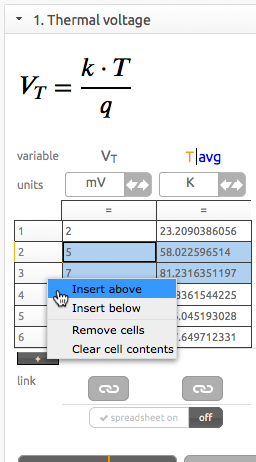Entering variable values
Enter a variable’s value in the text box labelled value.
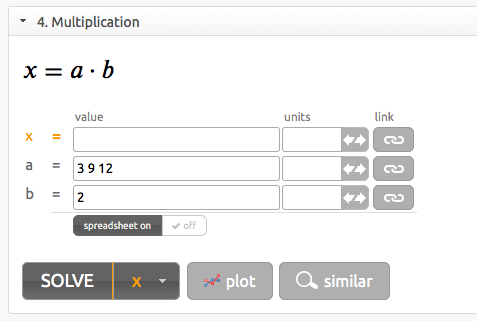
Also note that you can generate values, upload data files or assign constant values.
Once you’ve entered all data for your input variables, press the button to calculate the value of the output variable (x in the example above).
Note
If you change an input variable’s value after solving, the background of the solved variable’s text box will be shaded orange and the ‘solve’ button will begin pulsating to let you know that the current formula solution is not in sync with its input variables.
Value arrays (lists)
An array is a list of multiple values for a single variable.
All values in an array have the same units.
Array size
When you solve a formula, it’s important that all input variables have the same number of elements.
However, if a variable has just one value, that value will be automatically repeated (or broadcast) so that it has the same size as the other input variables.
Here’s an example, note how b‘s value ‘2’ gets re-used three times (matching the length of a‘s array), resulting in these three multiplication operations:
- 2 • 3 = 6
- 2 • 9 = 18
- 2 • 12 = 24

Entering array values
Separate multiple values by a semicolon.
Actually, you can use any reasonable character such as a space or comma, for example in order to increase legibility - but make sure it is a character distinct from that used for the radix (‘decimal mark’) or thousands separators.
Alternatively, you can press the button that appears in the text box when you start entering a value - a semicolon will be inserted into the text box at the current cursor position.
You may want to check out spreadsheet mode once you start dealing with larger arrays of data.
Spreadsheet mode
In addition to the standard (or simple) formula layout, the Solver has an alternative display mode, Spreadsheet mode, that is well-suited to manipulating large arrays of values.
This mode is similar to a spreadsheet application where you have a table of data structured into rows and columns. A column of data makes up the value array for a particular variable.
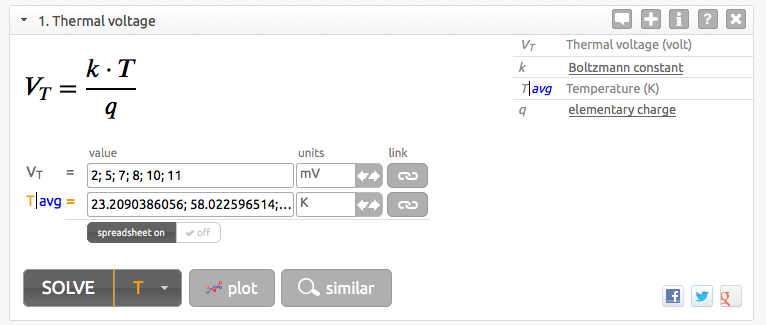
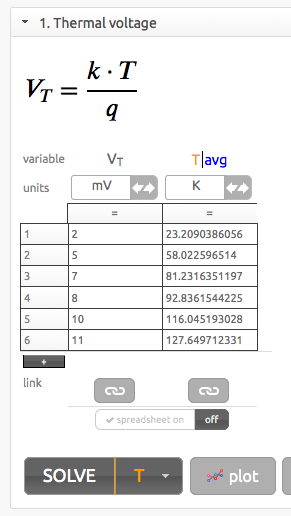

Adding rows of data
To add a row of data, i.e. to extend the variables’ array lengths by one, press the + button at the bottom of the table.
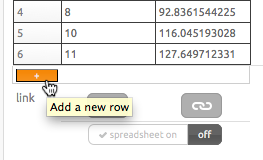
Alternatively, you can use the Context menu for this.
Getting data to/from spreadsheet applications
You can copy data into and out of common spreadsheet applications such as Microsoft Excel, OpenOffice, or LibreOffice.
Alternatively, you can export your spreadsheet data to .csv (comma separated values) format and follow the directions under Uploading data files.
Decimal marks, thousands separators and other internationalization issues
fxSolver will let you enter either a comma or period as the decimal mark. Continental Europe traditionally uses a comma for this, while English-speaking countries use a period (sometimes raised to mid-line).
Likewise, when entering data, you can enter data either a comma or period for digits grouping (‘thousands separator’) - but currently, fxSolver will silently remove the separator.
